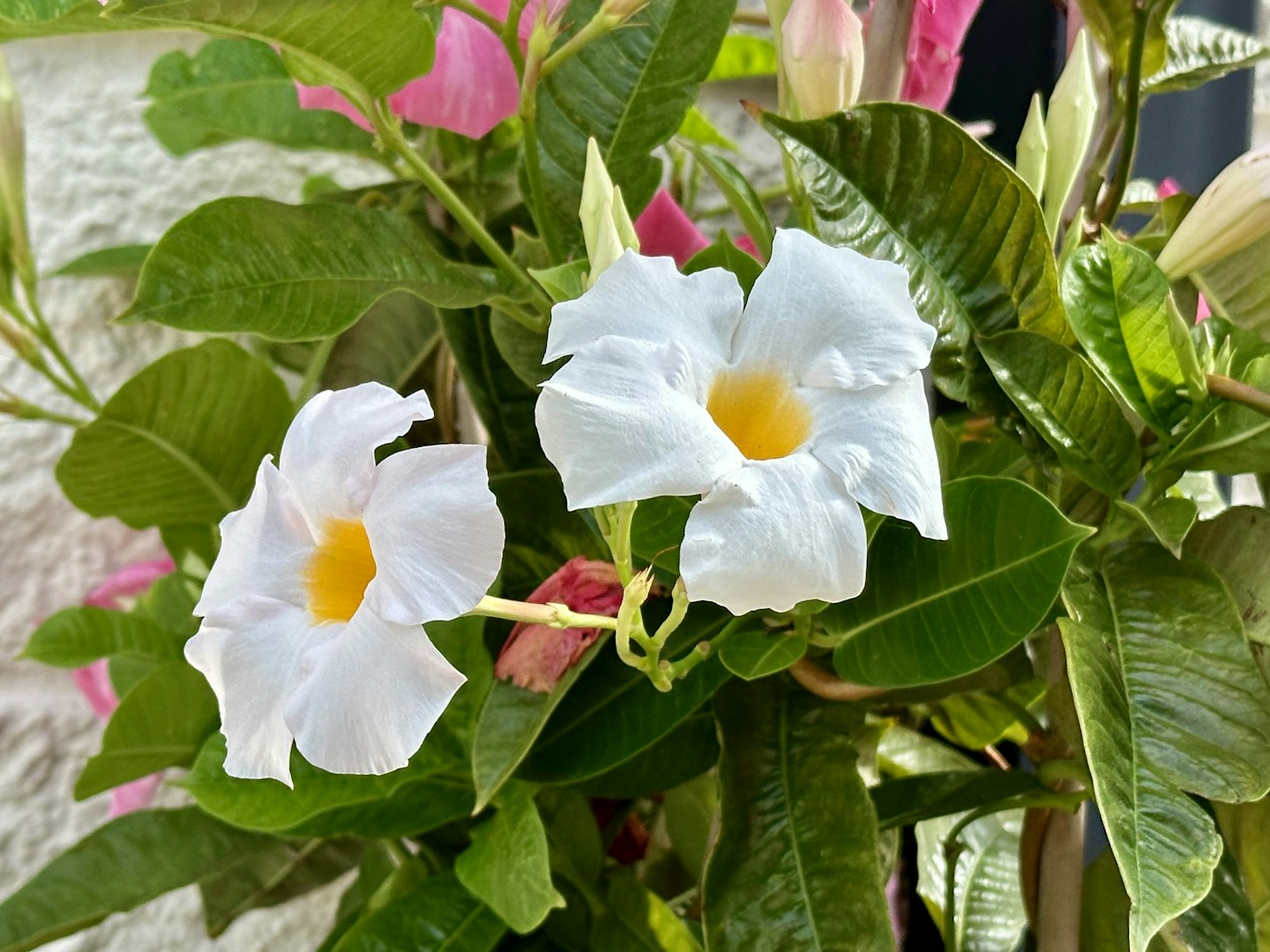
Dipladenia
Plant Habit: Mounding, spreading
Characteristics: Easy care
Water: Medium
Fertilize: Every two weeks
Height: Various, depending on variety
Width: Various depending on variety
Exposure: Sun
General Information: Tropical looking blossoms in several colours.
Dipladenia and Mandevilla are extremely similar. Dipladenia are generally more compact and shrubby in growth while Mandevillas are enthusiastic vines and climbers. Both feature gorgeous trumpet shaped flowers.
Plant your Dipladenia in a location that receives full sun for at least six hours a day. Ensure that the soil is well-draining and rich in organic matter. If you are growing Dipladenia in a pot, use a high-quality potting mix that provides good drainage.
Dipladenia plants require regular watering, especially during hot summer months. However, be careful not to overwater as this can lead to root rot. Allow the top inch of soil to dry out before watering again. Mulching around the base of the plant can help retain moisture and regulate soil temperature.
Feed your Dipladenia plant with a balanced fertilizer every two weeks during the growing season. Use a fertilizer specifically formulated for flowering plants to promote healthy growth and abundant blooms. Alternatively if planted in a container add 3-4 month slow release fertilizer to the soilless mix before planting.
In Manitoba, winters are harsh, and Dipladenia is not frost-tolerant. Before the first frost, bring your potted Dipladenia indoors and place it in a cool, well-lit area. Cut back the foliage to a manageable size. Be diligent to monitor for pests like spider mites that have come indoors with it. Water sparingly during the winter months, allowing the soil to dry out between waterings. If you have planted Dipladenia in your garden, consider digging it up and overwintering it in a container indoors.
